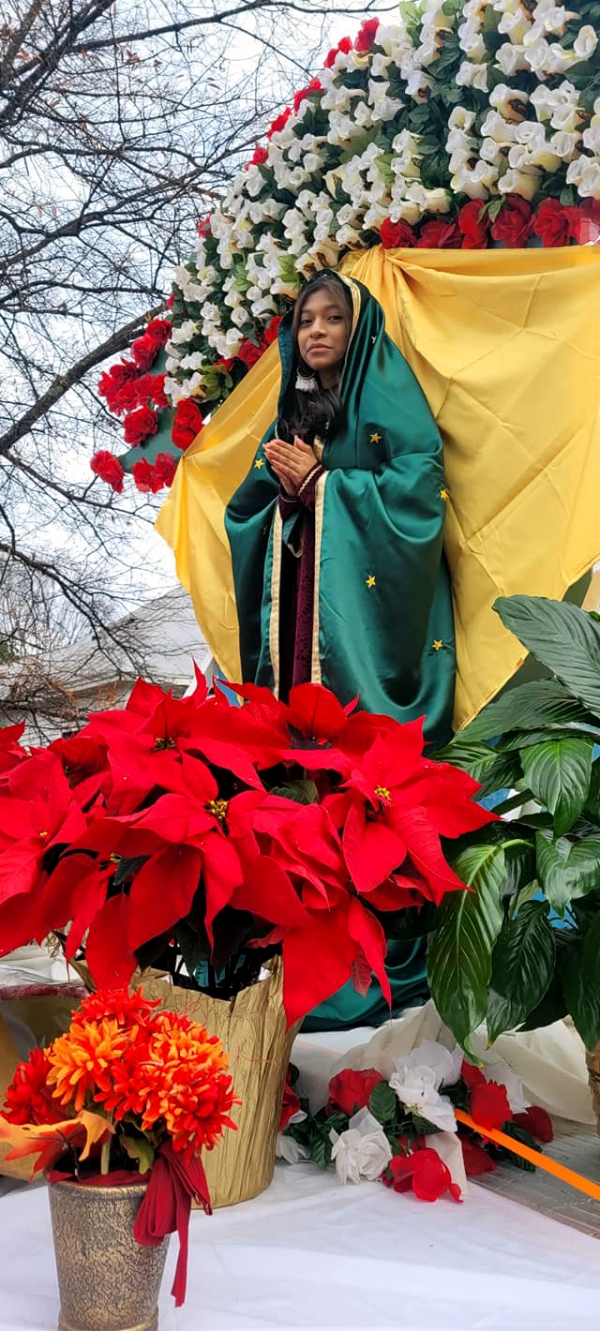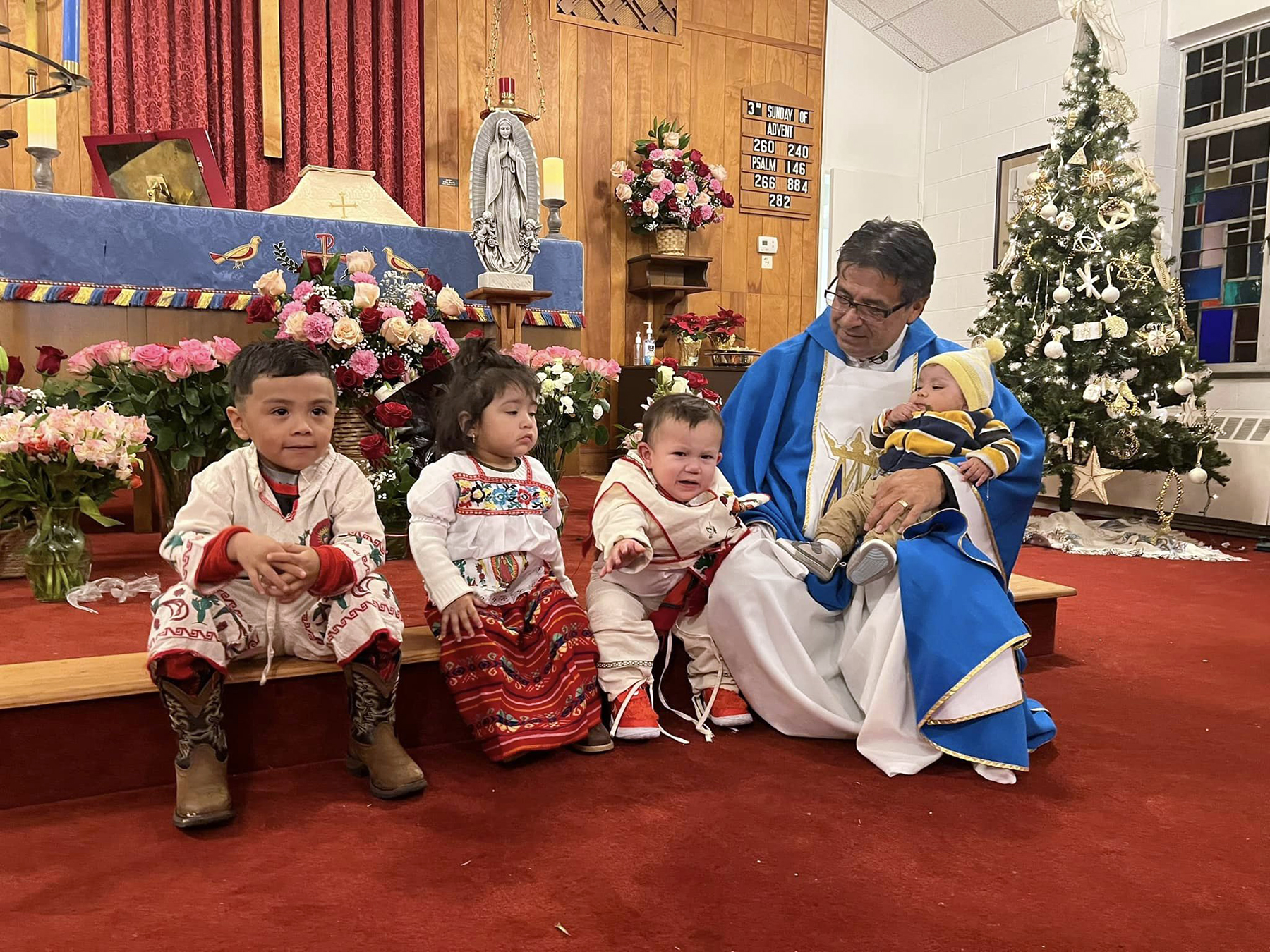Disciple: The Feast of la Guadalupe

A festival of lived faith
By the Rev. Canon Franklin Morales
Editor’s note: This reflection is the first-ever article created in Spanish for the Disciple. While the English translation appeared in print, the original Spanish version is available in the Spanish-language digital version on the magazine app or on the Spanish side of the diocesan website.
December is just around the corner, and we are preparing for what it brings us, remembering the mystery of the Incarnation and how God manifests himself to his people through everyday life, in the simple and sometimes imperceptible things amidst the great expectations of the world.
We also celebrate the well-known devotion to the Virgin of Guadalupe. This celebration, which takes place on December 12, commemorates the apparitions of the Virgin to the Indigenous people of a nearby place. Juan Diego is the man to whom the Virgin manifested herself on Tepeyac Hill when he was on his way to church for the Eucharist. He saw a glow and heard music strange to his native language. He approached and saw, for the first time, the Virgin, who told him to talk to the town’s priests so they would build a temple in her honor on that hill. Juan Diego told of his experience to Bishop Zumarrarga and the town’s friars, but they did not believe him. This was the first of three appearances, with the third being the most important.
[Image: The faithful of Guadalupana, Wilson, celebrate the Feast of la Guadalupe with processions, floats and, of course, roses. Photo courtesy of Guadalupana]
Since they did not believe Juan Diego, he decided not to pass near Tepeyac Hill again. But one day when his uncle was sick, he took the road and went over the hill and had the same experience. The Virgin told him not to worry about his uncle, as he would be fine, and to go pick flowers and take them to the bishop. Juan Diego collected them in his blanket and went to the bishop’s house, and when he opened his cloak, the roses fell, and the image of the Virgin was printed on the blanket.
Shortly after, they began construction on the Church of the Virgin of Guadalupe, and the tradition so beloved and important to the Mexican people began.
The date of the Feast of la Guadalupe is December 12, but it actually begins the night before with a vigil and many processions. At dawn, it is customary to sing the Mañanitas, a traditional birthday song. The day is a mosaic of the people’s demonstrations of affection for the Virgin, which range from pilgrimages to various masses during the day, not counting all the roses that fill the streets and the temple itself with their aroma.
But what do we really celebrate in this Marian dedication, and what does it mean for the Mexican people, as well as all those devoted to her?
In some way, it is about seeing how God makes a way with his people through things that are familiar to them rather than abstract things. María del Tepeyac, in her appearances to Juan Diego, tells him on one occasion, “Don’t be afraid, I am not here, I am your mother.” Motherhood is a reality that touches the deepest fibers of the Latin American people in general, remembering at the same time the love of God.
Some biblical texts make this comparison: “As a mother comforts her child, so I will comfort you; you shall be comforted in Jerusalem.” (Isaiah 66:13) “Can a woman forget her nursing child or show no compassion for the child of her womb? Even these might forget, yet I will not forget you.” (Isaiah 49:15)
The figure of the Virgin represents the presence of God, who walks with his people, and the love of God that is compared to that of a mother. It has been the way in which the Latin American people, especially those of Mexico, have seen and felt the action of God.

[Image: The Rev. Javier Arias celebrates the Feast of la Guadalupe with some of the youngest parishioners at Christ’s Beloved Community/Comunidad Amada de Cristo, Winston-Salem. Photo courtesy of Comunidad Amada de Cristo]
This, however, does not just remain in a devotion that is sterile or does not produce fruit. On the contrary, it motivates us to live a relationship with God, and with others, from that maternal love of God.
The Mexican and Latin American people see in the person of the Virgin the reality that many people, and many young people, live in our contexts: Young people who have had to live similar situations of discrimination, classism and racism. Single mothers who, in the midst of life’s setbacks, look for a way to provide for their sons and daughters. Young mothers we see crying over the departure of their children for foreign and distant lands in search of a future. Mothers who have seen their sons and daughters die at the hands of injustice and systems of oppression that stereotype people who look, think and are different.
That is why the devotion to the Lady of Tepeyac, the Virgin of Guadalupe, is not a devotion uprooted from reality but one born from the day to day, from life itself. It is intertwined in the simple and lived faith of the people of God. That, together with the figure of the mother of Tepeyac, sings with the Magnificat the works of God that favor the oppressed and those who need God, turning upside down the order of values to which we are accustomed. It is simply making ascending theology out of clay, from everyday life, upward towards God, who accompanies us and does not leave us orphans.
The Rev. Canon Franklin Morales is the canon missioner for Latino/Hispanic ministries for the Diocese of North Carolina.
